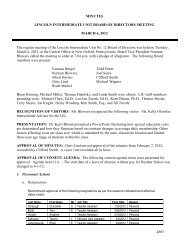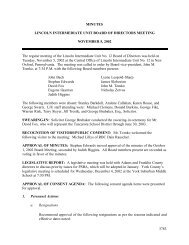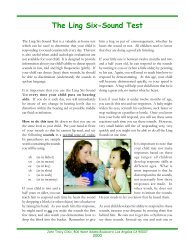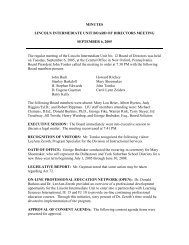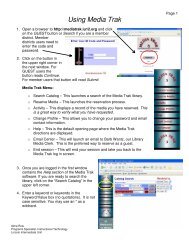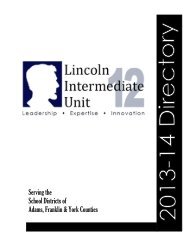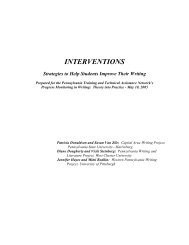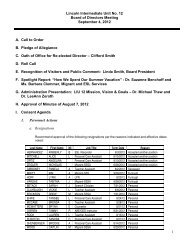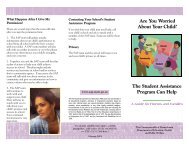WRITING STANDARDS ALIGNED IEPS: - Lincoln Intermediate Unit 12
WRITING STANDARDS ALIGNED IEPS: - Lincoln Intermediate Unit 12
WRITING STANDARDS ALIGNED IEPS: - Lincoln Intermediate Unit 12
You also want an ePaper? Increase the reach of your titles
YUMPU automatically turns print PDFs into web optimized ePapers that Google loves.
Participation in State and Local Assessments<br />
Key Concept: In Pennsylvania there are five options for<br />
test participation for students with disabilities:<br />
• The PSSA<br />
• The PSSA with accommodations<br />
• The PSSA-Modified (Spring 2010 - Math only;<br />
Grades 4-8 and 11)<br />
• The PSSA-Modified with accommodations<br />
(Spring 2010 - Math only; Grades 4-8 and 11)<br />
• The PASA (Pennsylvania Alternate System of<br />
Assessment)<br />
Indicate the options determined by the IEP team.<br />
Measurable Annual Goals (MAGs)<br />
Participation in the PSSA-M requires a student’s IEP to<br />
be standards aligned. This includes MAGs aligned to<br />
grade-level standards.<br />
The components of a MAG include:<br />
• Condition<br />
• Name<br />
• Behavior<br />
• Performance criteria<br />
As an extension of prioritizing student needs, the<br />
IEP team includes wording from any of the following<br />
sources to meet the requirements of writing a<br />
standards aligned MAG:<br />
• Grade-level standards<br />
• Grade-level assessment anchors<br />
• Grade-level eligible content<br />
• Grade-level big ideas<br />
• Grade-level concepts<br />
• Grade-level competencies<br />
Not every MAG must be standards aligned. For<br />
example, functional goals related to independent<br />
living, behavior, or personal hygiene do not align with<br />
the academic standards.<br />
Key Concept: A MAG is written using a grade-level<br />
standard (or some component of the SAS curriculum<br />
framework). However, a student may be working<br />
on the grade-level goal using instructional-level<br />
materials.<br />
Example: Reading standard 1.2 is Reading, Analyzing<br />
and Interpreting Text.<br />
Standard 1.2.6.A states: Evaluate text organization<br />
and content to determine the author’s purpose, point<br />
of view, and effectiveness.<br />
Below are some options of how the above standard<br />
may be written into a MAG with relevant specially<br />
designed instruction (SDI):<br />
• Determine the author’s purpose, point of view,<br />
and effectiveness (a grade-level standard),<br />
but begin working on this standard using<br />
instructional-level reading material then adjust<br />
as the student’s reading level improves.<br />
• Determine the author’s purpose, point of view,<br />
and effectiveness (a grade-level standard)<br />
using grade-level reading material with the use<br />
of effective adaptations, accommodations and<br />
SDI. For example, graphic organizers, enlarged<br />
print, chunking the amount of reading<br />
required at one sitting.<br />
• Determine the author’s purpose, point of view,<br />
and effectiveness (a grade-level standard)<br />
using modified grade-level reading material<br />
(e.g., simplified vocabulary).<br />
In addition, a student may have a MAG in which he/<br />
she is working toward part of a grade-level standard.<br />
Examples include:<br />
• Determine the author’s point of view (begin<br />
by working toward this part of a standard using<br />
instructional-level reading materials then adjust<br />
as the student’s reading level improves).<br />
• Determine the author’s point of view using<br />
grade-level reading material with the use<br />
3



